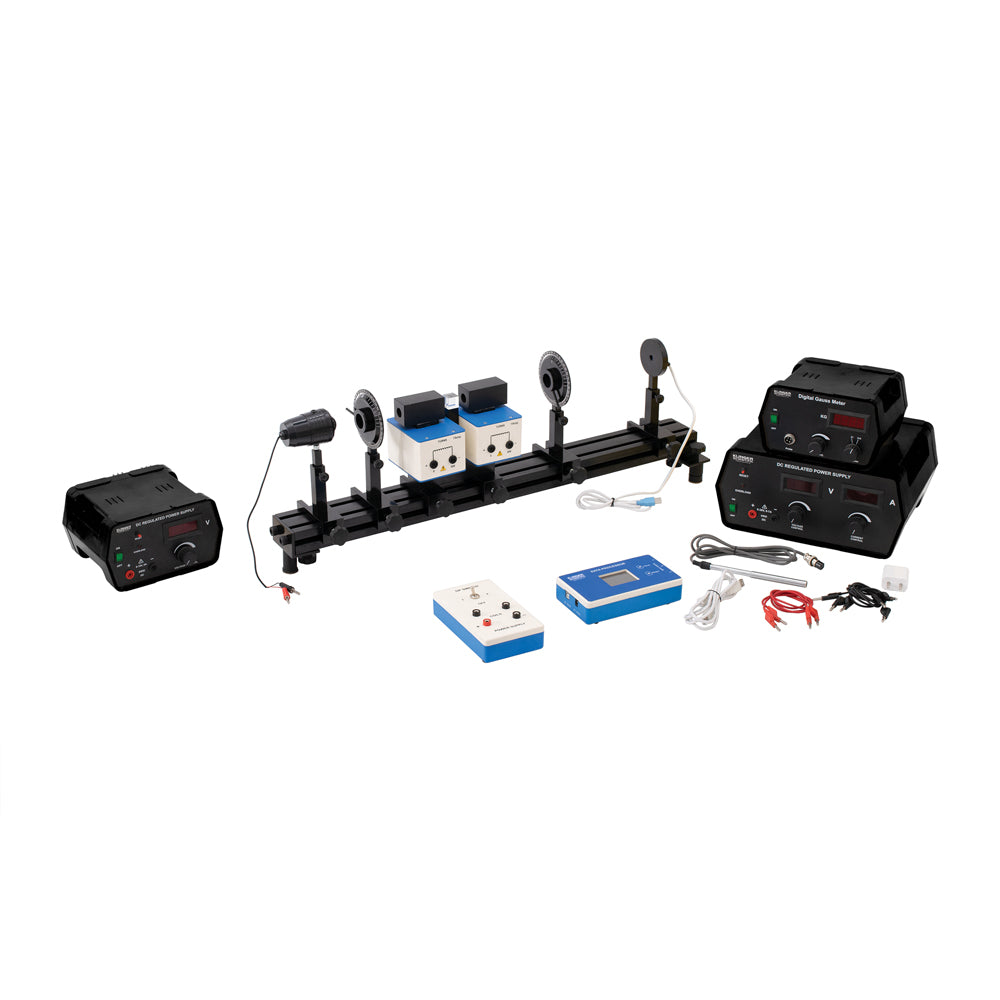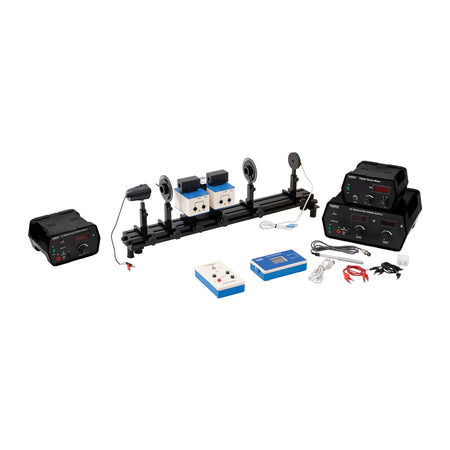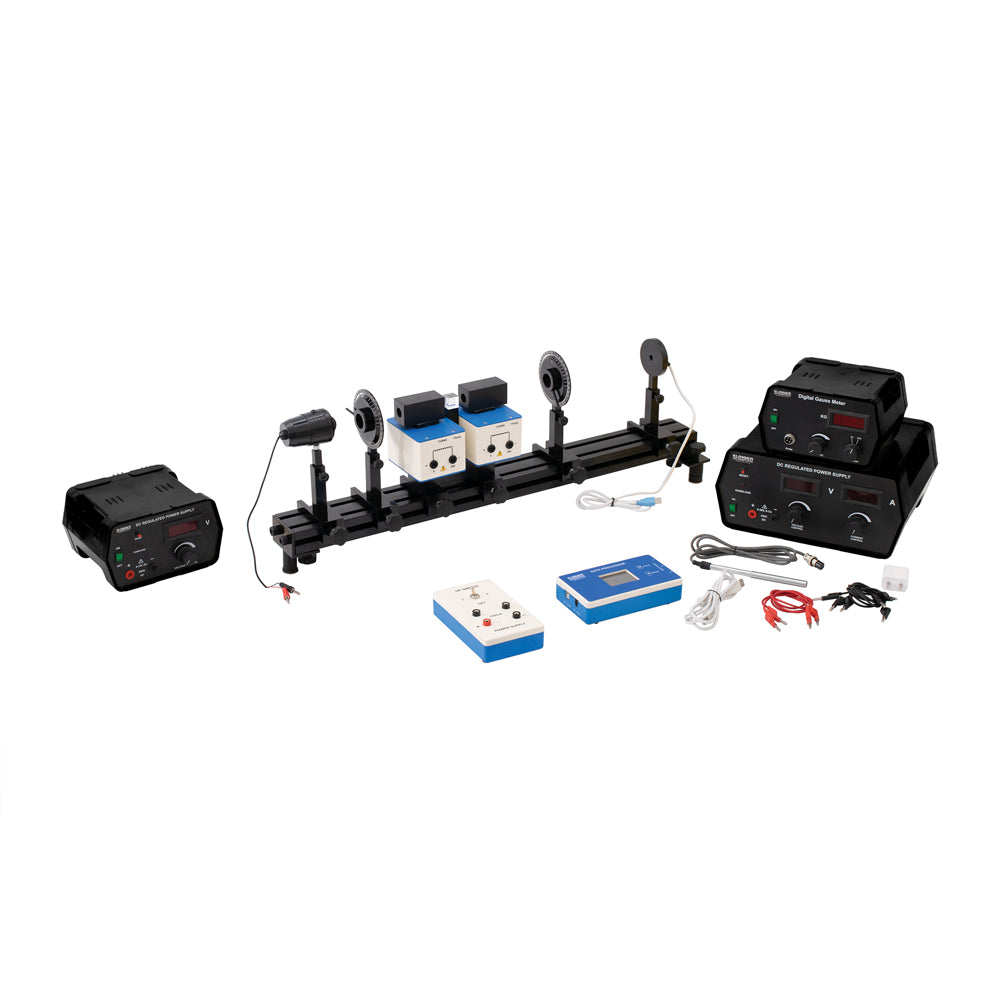KSCIFEE Klinger Scientific Faraday Effect Experiment Set Up
Couldn't load pickup availability
Klinger Scientific Faraday Effect Experiment Set Up
This phenomenon, called the Faraday Effect, occurs in liquids and gasses as well as solids. The Verdet constant V, which measures the strength of the effect, is different in different materials, and varies with the wavelength l of the light. The Faraday Effect is a consequence of the fact that the magnetic field removes the symmetry for propagation of left-handed and right-handed circularly polarized light, i.e. the index of refraction for light of the two polarizations becomes different in the presence of the field. The relationship between the Verdet constant and the wavelength dependence of the index of refraction depends critically on the nature of the medium, i.e. whether it is semiconducting, diamagnetic, paramagnetic, ferromagnetic, etc.; and hence a correct quantum mechanical calculation requires use of methods from the quantum theory of solids. A simple semi-classical calculation can be given, however, which incorporates much of the essential physics and obtains the right order of magnitude for the effect. This calculation, given below, shows that V = -K(e/2mc2)l (dn/dl) (2) 2 where e and m are the charge and mass of the electron, c the speed of light and n the index of refraction. (This formula is valid in cgs units for which the Verdet constant has units of radians per Gauss-cm.) The dimensionless constant K measures the deviation of the Verdet constant from the value predicted by the simple semi-classical theory; for molecular hydrogen gas K=0.99; but for solids it can be substantially different from unity. Facilities exist in the Advanced Lab to measure the Verdet constant at fixed wavelength, and to determine the index of refraction and its dependence on wavelength, for rods of two different types of glass. This allows verification of both the basic Faraday Effect and of its relation to the index of refraction.
OBJECTIVES:
- Observe the effect of a magnetic field on plane of polarization of polarized light as it passes through a dispersive medium.
- Measure the Verdet’s constant of a given dispersive material.
PRINCIPLE
When a linearly polarized light passes through an optical medium in a region of strong magnetic field, the plane of polarization of linearly polarized light rotates by an angle. The angle of rotation of plane polarized light is proportional to the length of optical medium and component of magnetic field in the direction of light. The factor of proportionality is a medium specific and is called Verdet’s constant. And this effect is known as the Faraday Rotation or Faraday Effect. Discovered by Michael Faraday in 1845, the Faraday effect was the first experimental evidence that light and electromagnetism are related. In the experimental setup the optical medium is SF6 glass cube.
KEY FEATURES
- Modular U-Core design with precise optical alignment – U-Core along with pole pieces are designed with Poka-Yoke principle so that the optical alignment is undisturbed when the pole pieces are moved to accommodate samples of different dimension.
- Light Sensor: This enables measurement of light intensity which in turn helps in measuring the amount of rotation of plane polarization. The meter reads with a precision of 1 lux. Sensor based measurements eliminate the errors in values due to simple eyesight measurement. Moreover, it provides the freedom to conduct the experiment at any setting of polarizer-analyzer angles.
WHAT YOU NEED
- KSCIOB1 Optical Bench Set 0.8m 1
- KSCIHA001 Light Source Holder 1
- KSCIHA004 Polarizer Holder 1
- KSCIHA006 Analyzer Holder 1
- KSCIUP025 Electromagnet Set Assembly 1
- KSCIAC004 Glass Block 1
- KSCIHA510 Light Sensor Holder 1
- PH93225G Teslameter Digital 1
- KSCIPS61035D/7 Power Supply for Electromagnet 1
- KSCIPS61022D/2 Power Supply for Light Source 1
- KSCIDP1 Data Processor 1
INSTRUCTIONS FOR USE CLICK HERE







